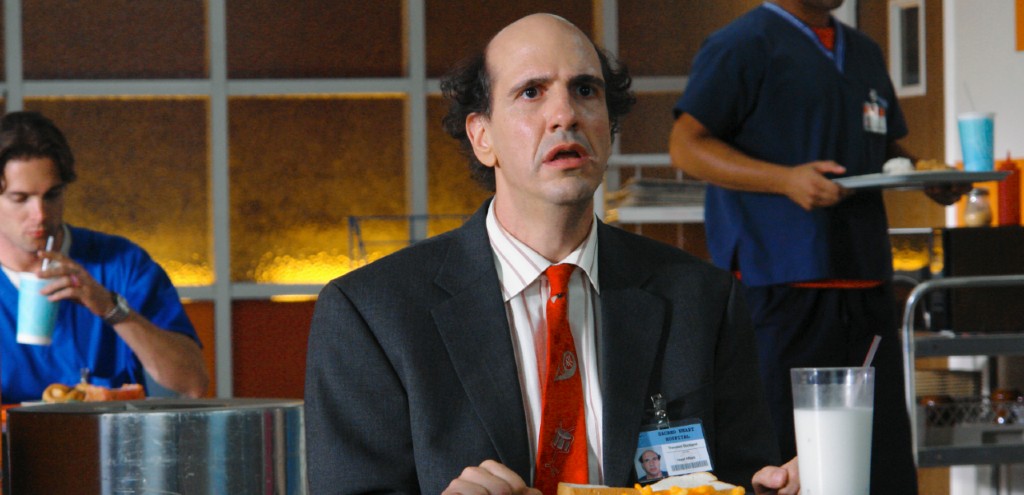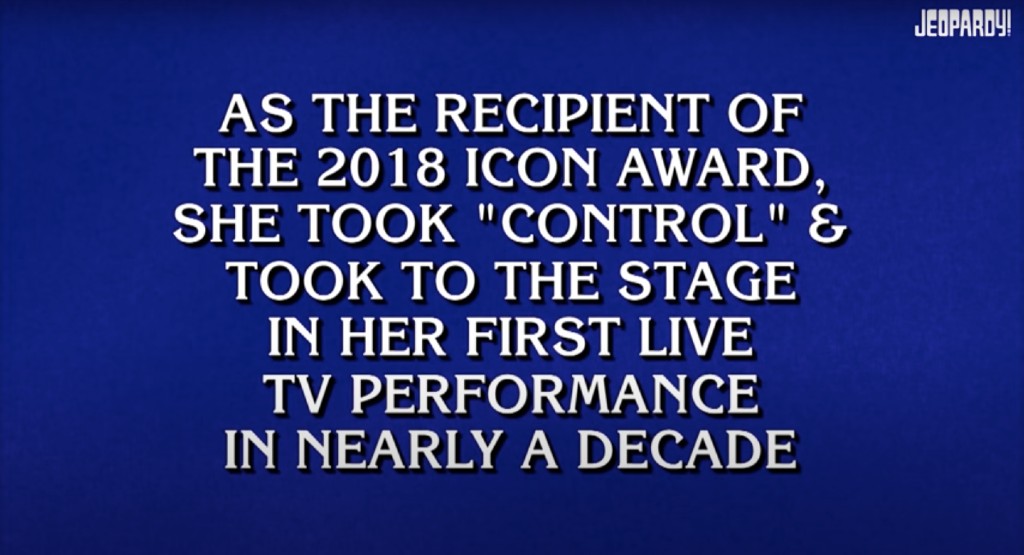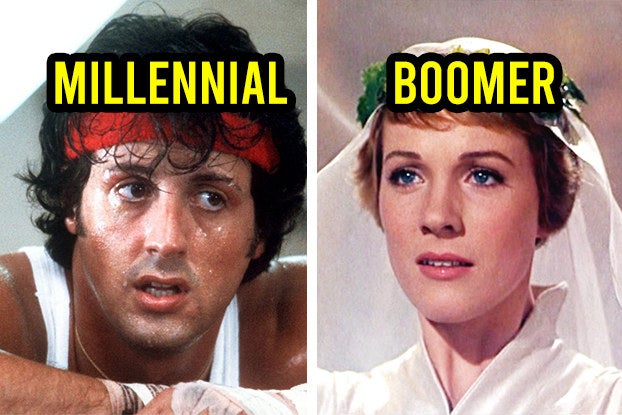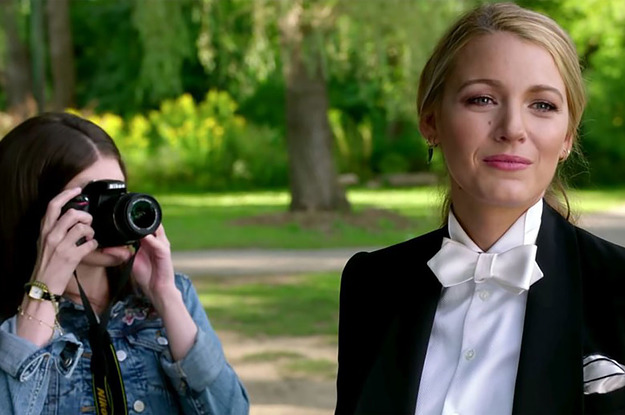Category: News
Category Added in a WPeMatico Campaign

Sam Lloyd was far from the star of Scrubs, but his Ted was an important part of the sitcom still beloved by fans years after it went off the air for good. The nuance shown by its characters made it for more than a slapstick comedy set in a hospital, and Lloyd’s Ted Buckland was a great example of that.
Friday brought news that Lloyd died of a brain tumor at the age of 56, sparking at outpouring of grief from those familiar with his work in entertainment. According to TMZ, Lloyd died on Friday after he was diagnosed with a brain tumor early in 2019.
Lloyd was diagnosed with an inoperable brain tumor in January 2019 — just weeks after he and his wife Vanessa welcomed their first child, Weston. After a year and a few months, he succumbed to the disease.
The news brought an outpouring of grief and memories from those involved in the show as well as fans. Scrubs creator Bill Lawrence broke the news of his death to many with a tweet on Friday.
Thinking a lot about Sam Lloyd today. (Ted). Truly such a kind, sweet guy. He will be missed by so many. pic.twitter.com/JRzlLKhqHB
— Bill Lawrence (@VDOOZER) May 1, 2020
Scrubs star Zach Braff also shared condolences on Twitter, sharing memories of Lloyd making him break during filming and remembering his kindness.
Rest In Peace to one of the funniest actors I’ve ever had the joy of working with. Sam Lloyd made me crack up and break character every single time we did a scene together. He could not have been a kinder man. I will forever cherish the time I had with you, Sammy. pic.twitter.com/wwyvGNbveG
— Zach Braff (@zachbraff) May 1, 2020
If you were on Twitter on Friday you likely saw a clip of Ted from people mourning his loss and his abilities to land a joke.
Damn. Ted was easily one of my favorite characters on Scrubs! And he could sing his ass off! RIP Sam Lloyd. pic.twitter.com/17p3wZQPxX
— Fed Hammond (@JustInNotOut) May 1, 2020
rip sam lloyd. legal custodian for life. pic.twitter.com/fOSs73WitV
— Seth Reese ن (@offseth_) May 1, 2020
It is with heavy heart that I post this send off to actor Sam Lloyd, known to #Scubs fans as Ted Buckland. So much more than just a bit actor/character, Sam/Ted provided so much laughter and joy with a character so miserable yet very sympathetic. #RIPSamLloyd pic.twitter.com/aMNu61IG9v
— SCRUBSclassic
(@ScrubsClassic) May 1, 2020
R.I.P Sam Lloyd, one of my favourite TV Characters of all time
pic.twitter.com/zkETnvou1a
— Grant
(@Grant_SCFC) May 1, 2020
Many shared some of his musical moments from the show, which became a reoccurring part of episodes later in the series.
Lloyd was known for his acting and music, and appeared in a variety of other roles during his career including projects like Desperate Housewives, Shameless, Modern Family and The West Wing. He also had guest appearances on Seinfeld and Spin City. His musical act, The Blanks, appeared on Scrubs and performed well after the show went off the air. His Ted role was also reprised on Cougar Town in more recent years.
By now, we know pop culture moments appearing on Jeopardy! are a lot harder for some contestants than most people watching at home might expect. The wide variety of topics that might come up on the show means studying well for the syndicated trivia show is more of a shallow dip than a deep dive, and quite frankly, it seems major pop culture moments, sports and music often get overlooked by contestants who spend more time brushing up on the British monarchy or something more studious.
Fresh off of one Jeopardy! contestant confusing Chaka Khan with a warrior from the 1800s, Wednesday’s show featured a video category with clips from the Billboard Music Awards. And things were going great until one contestant thought that Janet Jackson was Ariana Grande. You can watch the full category play out above, but the $800 question is where everything went off the rails. Here’s the question:

The video was clearly showing Jackson performing “Nasty” at the Billboard Awards, and though the camera was a bit zoomed out, the 1986 song is clearly playing. But it wasn’t enough for Alwin Hui, who perhaps saw the top ponytail and immediately said “Ariana Grande.”
Sarah got the answer correctly after a quick “no” from show host Alex Trebek, but plenty of music aficionados noticed the gaffe.
Absolutely unforgivable lmfao #Jeopardy pic.twitter.com/3x6dZhJOEI
— bryanna (@bryannasmith) April 29, 2020
I just watched a guy named Alwin on Jeopardy! call Janet Jackson Ariana Grande. What world IS THIS?!?!? #Jeopardy pic.twitter.com/CoxpSFcNd8
— Ransom Lewis (@ransomlewis69) April 29, 2020
Interestingly, Alwin’s name appears to be sandwiched between a basketball, so perhaps music is just his weakness and he’s a big sports fan. He probably would have fared much better with the football category that stumped less sports-inclined contestants a few years back but, them’s the breaks.

Tonight on the WWE Friday Night Smackdown open discussion thread:
Otis doesn’t need any extra reasons to want to punish Dolph Ziggler, but he’s not about to turn one down either. The Blue Collar Solid Superstar will square off with The Showoff in Money in the Bank qualifying action.
Sonya Deville and Ziggler’s devious plan to derail Otis’ romantic dreams with Mandy Rose has come to light in recent weeks due to the involvement of an ominous figure.
Will the Otis and Ziggler rivalry reach a whole new level with the elevated Money in the Bank stakes?
Tune in to Friday Night SmackDown at 8/7 C on FOX to catch the next chapter between the two rivals. (via WWE.com)
On tonight’s card: Money in the Bank qualifying matches between Otis and Dolph Ziggler, and Carmella and Mandy Rose. Plus, Daniel Bryan “looks for revenge” against King Corbin for what happened to Drew Gulak, and the Forgotten Sons have pinned the Smackdown Tag Team Champions!
As always, give a thumbs up to any comments from tonight’s open thread you enjoy and we’ll include 10 of the best in tomorrow’s Best and Worst of Friday Night Smackdown on Fox report. Make sure to flip your comments to “newest” in the drop down menu under “discussion,” and enjoy the show!

Quarantine may have provided us with all the time in the world to finally learn how to play that guitar we occasionally fiddle around on, but it didn’t provide us with the guidance to really level up our skills in a measurable way. YouTube tutorials can only take you so far, if you truly want to have the level of skill that those nerds at Guitar Center who annoy everyone with their faithful “Stairway To Heaven” renditions have, you’re going to need some professional help. You can teach yourself a lot about the guitar by just using your ears and learning to play your favorite songs, but learning the basics of music theory and understanding the layout of the fretboard will take you further and faster in developing your craft.
Fender, makers of many of the most visually iconic guitars in rock history, are willing to help you on that journey by offering a lengthy free trial of their online guitar lessons. Through their Fender Play platform, Fender is offering three free months of electric or acoustic guitar, bass, and ukulele lessons with no payment info needed to signup. The lessons include step-by-step tutorials that’ll teach you the basics or walk you through learning your favorite popular songs. The tutorials are broken down in bite-size portions that are large enough to make you feel like one a day is an accomplishment, but small enough that there is room to push yourself through a few more. Access to easy to read tablature makes learning popular songs easier for those unwilling to learn how to read music.
Now you can emerge from quarantine with some serious skills, which will come in handy when we all get together on camping trips or beach hangouts in the future. The thought of a person wearing a fedora and playing an acoustic guitar on the beach used to make me cringe. Now? I’d give anything to be making a s’more at a beach while someone drops a whole heap of Jason Mraz covers.

Today marks the 30th anniversary of Neil Gaiman and Terry Pratchett’s collaborative novel Good Omens, but with the majority of the world on lockdown, it’s hard to properly celebrate the event. Fortunately, Gaiman orchestrated a socially-distanced workaround, and he even managed to secure the help of David Tennant and Michael Sheen who starred in the Amazon Prime miniseries based on the book.
According to Entertainment Weekly, Gaiman wrote a quarantine-themed mini-episode titled “Good Omens: Lockdown,” which features Sheen and Tennant’s angel and demon characters trying to make the best of these strange times of self-isolation:
The three-minute audio clip follows Aziraphale and Crowley as they check in with each other in lockdown. Crowley’s losing his mind with only his houseplants for company, and he can’t even bring himself to spread fear and discontent amongst the masses when the pandemic is already doing such a good job of that. Meanwhile, Aziraphale is perfectly thrilled to sit in his closed book store all day, reading and baking bundt cakes. After all, when you’ve successfully shut down the apocalypse, a global pandemic is no sweat.
Gaiman debuted the clip on Twitter with the following message: “Good Omens the book is 30. This is our present to all of you. It’s to make people happy, because too many of us are sad.” You can watch/listen to the episode below:
If you haven’t read and/or watched Good Omens, the book can be purchased in paperback or for your e-reader device, and the complete adaptation starring Tennant and Sheen is available for streaming on Amazon Prime. The story revolves around the unlikely friendship between an angel (Sheen) and a demon (Tennant), who’ve both grown to enjoy life on earth way too much, so they decide to defy the forces of both Heaven and Hell in a mad-cap effort to stop Armageddon.
(Via Entertainment Weekly)






